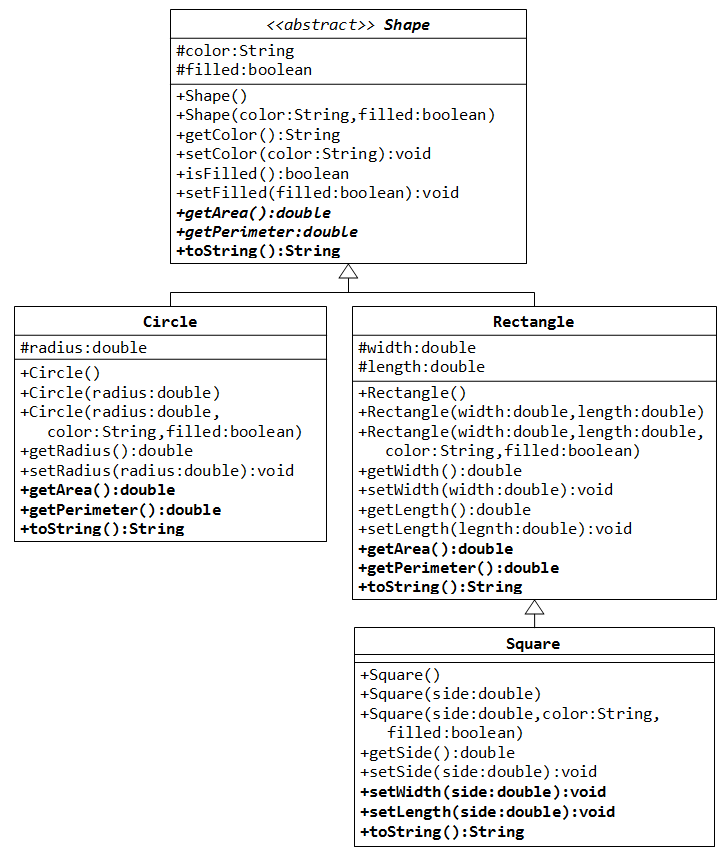Lesson 4
Abstract classes, interfaces and polimorfism.
Objectives
- abstract classes
- interfaces
- polimorfism
Documentation
Polimorfismul
Clase abstracte si interfete
Thinking in Java : Chapter 7 - Polimorphism
Diagrama de clase
Implementarea diagramelor UML in Java
Exercises
Exercise 1
Follow the instructions and implement the program according to specification . Create an appropriate test class for testing the program.
In this exercise, Shape shall be defined as an abstract class, which contains:
- Two protected instance variables color(String) and filled(boolean). The protected variables can be accessed by its subclasses and classes in the same package. They are denoted with a '#' sign in the class diagram.
- Getter and setter for all the instance variables, and toString().
- Two abstract methods getArea() and getPerimeter() (shown in italics in the class diagram).
- The subclasses Circle and Rectangle shall override the abstract methods getArea() and getPerimeter() and provide the proper implementation. They also override the toString().
Exercise 2
Create the UML class diagram for the program bellow. Add a new type of bird, and modify BirdController in order to handle the new type of bird.
class Bird { public void move(){ System.out.println("The bird is moving."); } } class Penguin extends Bird{ public void move(){ System.out.println("The PENGUIN is swiming."); } } class Goose extends Bird{ public void move(){ System.out.println("The GOOSE is flying."); } } public class BirdController{ Bird[] birds = new Bird[3]; BirdController(){ birds[0] = createBird(); birds[1] = createBird(); birds[2] = createBird(); } public void relocateBirds(){ for(int i=0;i<birds.length;i++) birds[i].move(); } private Bird createBird(){ int i = (int)(Math.random()*10); if(i<5) return new Penguin(); else return new Goose(); } public static void main(String [] args){ BirdController bc = new BirdController(); bc.relocateBirds(); } }
Exercise 3
Implement application based on the UML class diagram bellow. Create a test class for testing the program.


